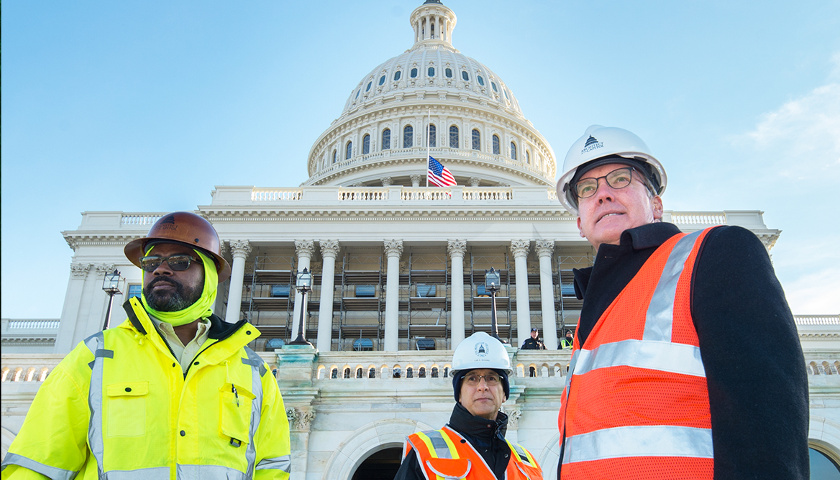by Robert Romano
2020 and 2021 are two sides of the same coin: Price instability brought about by the dollar being either relatively too strong or too weak, which can lead to or exacerbate economic slowdowns, creating higher unemployment and worse if the conditions persist for too long.
In 2020, at the height of the Covid pandemic, the problems included the global economy being shut down plus local lockdowns resulting in a massive recession and a flight to safety into U.S. treasuries as interest rates collapsed, making the dollar too strong. With the onset of deflation, consumer prices plummeted in March and April 2020, with oil even dropping briefly below zero dollars for the first time in history, and a concurrent rise of unemployment as 25 million Americans lost their jobs.
Since then, more than 17 million jobs have been recovered as states and businesses have steadily reopened, adjusting to the pandemic. This has been accompanied by an ongoing torrent of government spending—more than $4.95 trillion of new debt since Jan. 2020, $2.7 trillion of which was purchased by the Federal Reservesince then—and a subsequent weakening of the dollar.
Now we’re well into 2021, but the torrent of government spendinghas not abated, which began with the $2.2 trillion CARES Act in March 2020 and then the additional $900 billion phase four legislation that passed in December, both to address the economic fallout of Covid. Now, Congress has passed another $1.9 trillion Covid spending bill in March. Adding to the mix, President Joe Biden has another $2.3 trillion infrastructure spending bill planned.
As one would expect, even with the Fed engaged in massive quantitative easing, flooding the rest of treasuries markets, the weakening of the dollar has continued, leading to significant price inflation—the opposite side of the price instability coin—up 4.2 percent in the past 12 months, according to the Bureau of Labor Statistics.
The last three months, if prices continue climbing unabated the next nine months the way they did the past three months — that would bring annual inflation all the way up to 7.2 percent.
The month of April saw a surge in food, electricity, used cars and trucks and transportation prices, but a temporary softening of fuel prices, although the measurement was taken before the East Coast gas shortage in early May. Now, oil is again rallying, returning to $65 a barrel, prices not seen since Sept. 2019.
Where does it go from here? One key factor to watch will be the trade-weighted U.S. dollar index, published by the St. Louis Federal Reserve, which gives you a view of the relative strength of the dollar versus that of trade partners.
In the short-term, while the dollar is still weakening and the economy and inflation heating up as the recovery continues, one can expect job creation to continue. However, despite the flood of trillions of dollars of spending, job creation has slowed the past month, from 609,000 more Americans saying they had jobs in March, to 328,000 in April.
With 7.5 million jobs left to recover from the Covid recession, at the April rate, it might take another two years to just get back to where we started before the coronavirus swept the land.
Could the spending be counterproductive? For example, does the additional $300 on top of regular unemployment benefits create a perverse incentive not to look for work?
Additionally, if inflation becomes persistently high, it could eventually slow down consumer spending and result in stagflation. That was certainly the case in the 1970s, where inflation correlated with high unemployment, too.
Last year the battle was that the dollar was far too strong, deflation and the economy closing as millions of job losses were rampant.
In 2021, after a year of spending and borrowing trillions and now the dollar is rapidly getting weaker, and too much spending could be curtailing job seeking.
Neither extreme is good or healthy for the economy long-term, advising price stability as the way to keep everything running smoothly and create the conditions for job creation. First up should be forestalling or severely curtailing Biden’s planned infrastructure spending binge and instead focus on conditions for safely reopening the economy, and winding down the emergency economic supports, including the unemployment extensions. Will Congress take its foot off the gas pedal?
Obviously, the continued economic recovery depends on the current successful administration of the Covid vaccines and their long-term effectiveness. With 155 million doses administered, if we start seeing cases and deaths rise again, all bets are off. Then, we won’t be worried about inflation.
– – –
Robert Romano is the Vice President of Public Policy at Americans for Limited Government.




